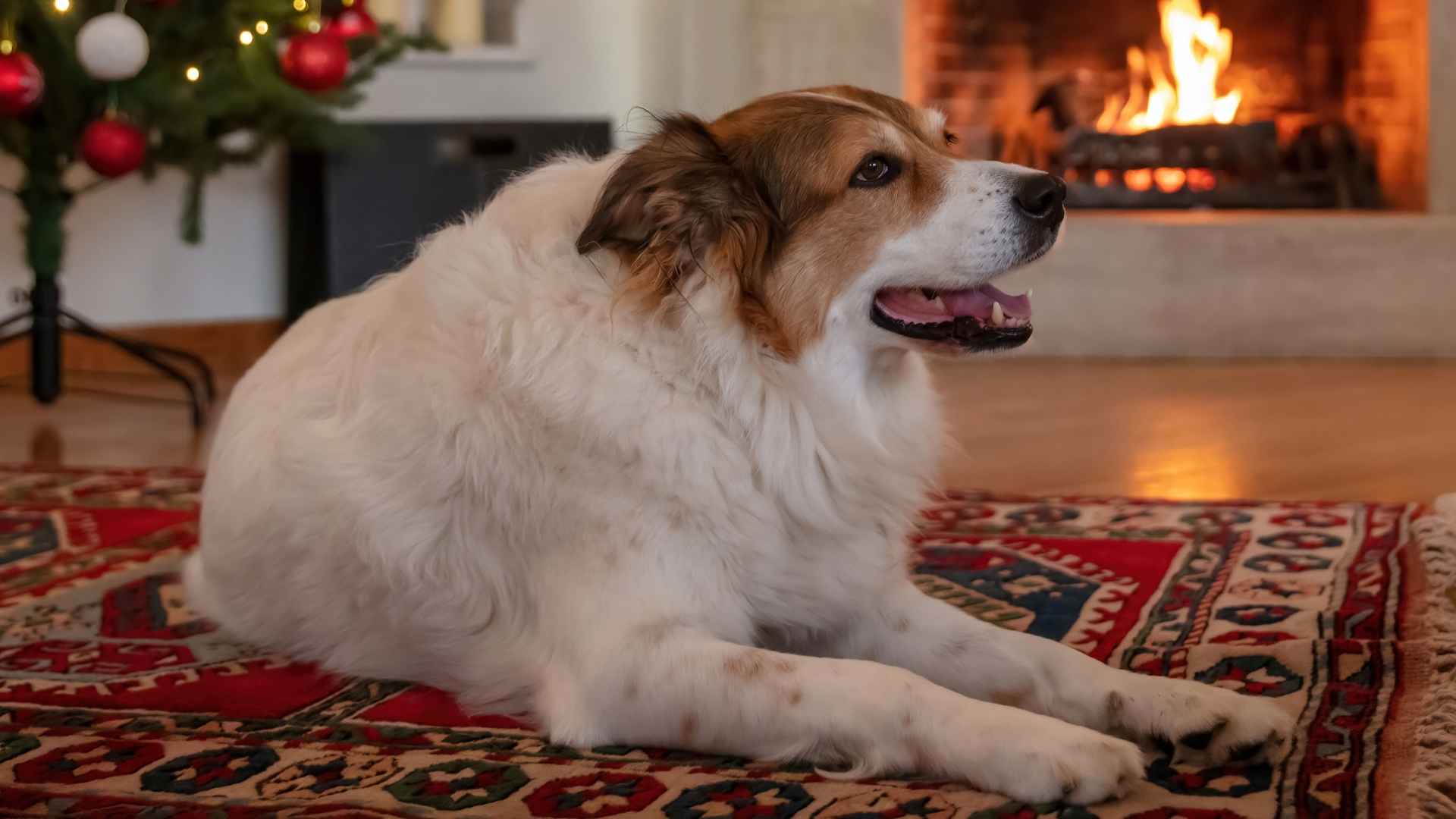There’s something magical about a big home. Wide hallways, sunny rooms, a spacious backyard… but let’s be honest, it feels even better when there’s a dog running through it all. The right dog doesn’t just fit your space—they fill it with love, energy, and personality.
If you’ve got room to spare, you’re in luck. Some breeds truly thrive in larger homes, stretching their legs, lounging in sunspots, or playing in the yard like it’s their kingdom.
Not all dogs need the same kind of space, though. That’s why it’s important to pick the right companion that matches your lifestyle and your square footage.
In this guide, we’re revealing the breeds that were practically made for roomy living. Big heart, big home, perfect match.
Best Dog Breeds for Large Homes
1. Scottish Deerhound
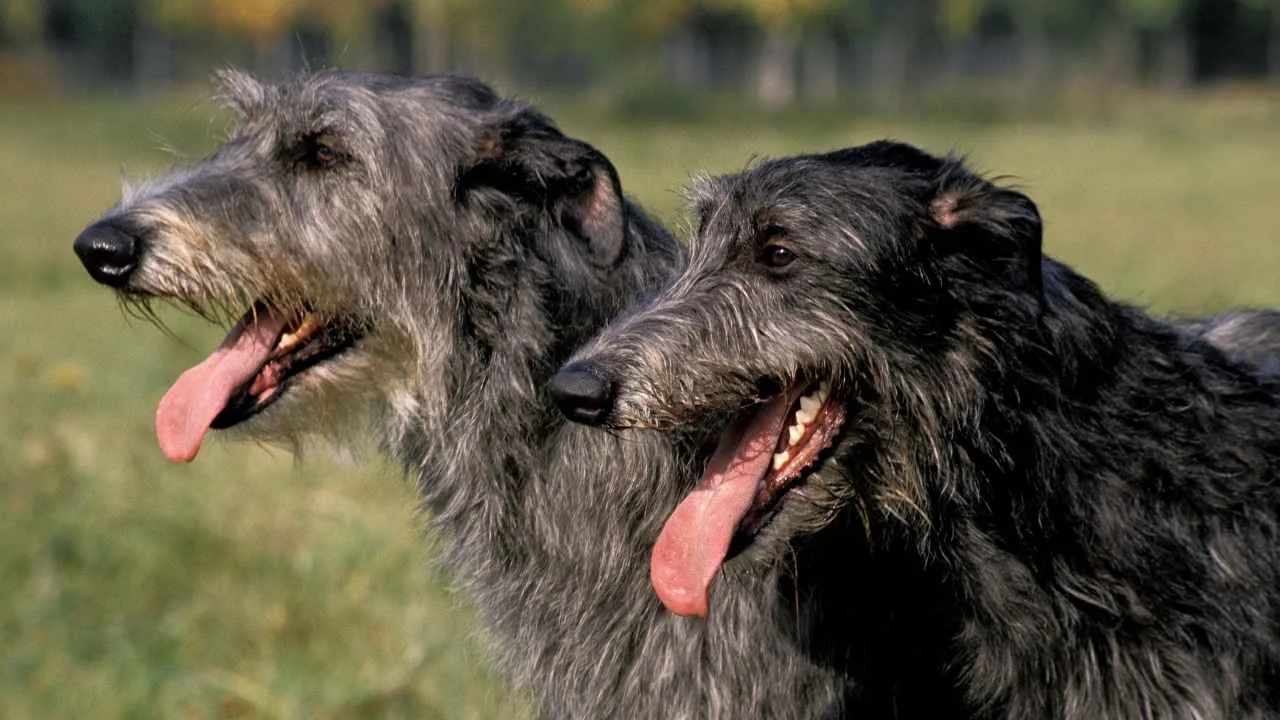
The Scottish Deerhound isn’t just tall — it’s one of the most elegant and calm-natured large dog breeds around. Originally bred to hunt red deer in the Scottish Highlands, their long, wiry coat and lanky frame speak to their history of endurance and agility. Despite that hunting legacy, they’re surprisingly mild indoors.
Space-loving but not space-taking
This breed needs room to stretch and move, but they’re not hyperactive. In large homes, they tend to lounge quietly in their favorite corner, content with a good walk and a soft place to rest.
According to the VCA Animals Hospitals, their long limbs and deep chest aren’t built for tight spaces, so smaller homes can be tricky to navigate for them.
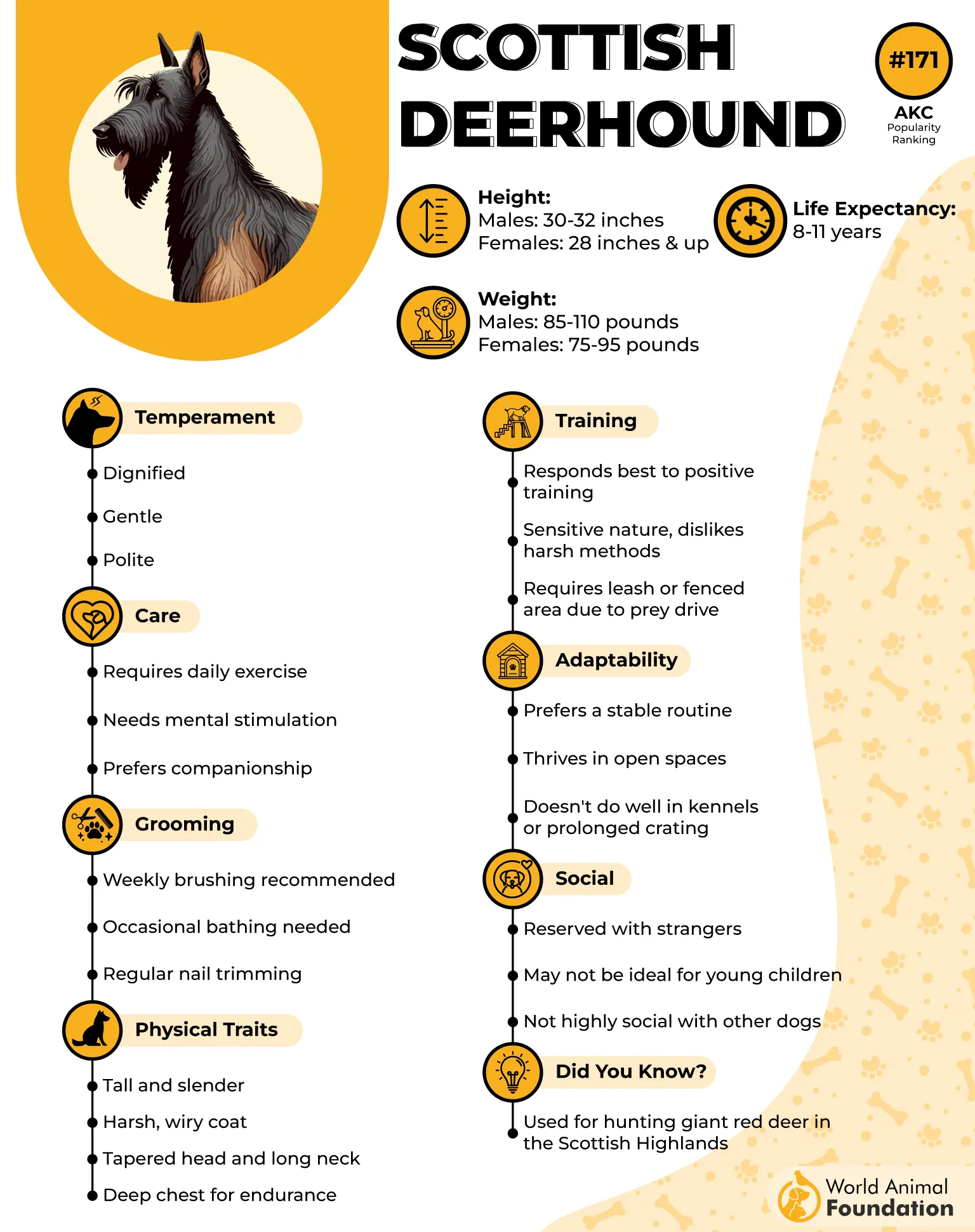
Personality that surprises new owners
Many dog owners are surprised by how gentle and sensitive Deerhounds are. They bond deeply with their people and aren’t big barkers or attention-demanders. In fact, they’re almost cat-like in their grace and stillness, only springing into full motion when they have space to gallop.
Loyalty meets gentle temperament
Scottish Deerhounds can be great family dogs for households that understand their calm nature. They’re not guard dogs, and they don’t thrive in chaotic environments — but in calm, spacious homes, their loyalty and gentleness shine through.
2. Tibetan Mastiff
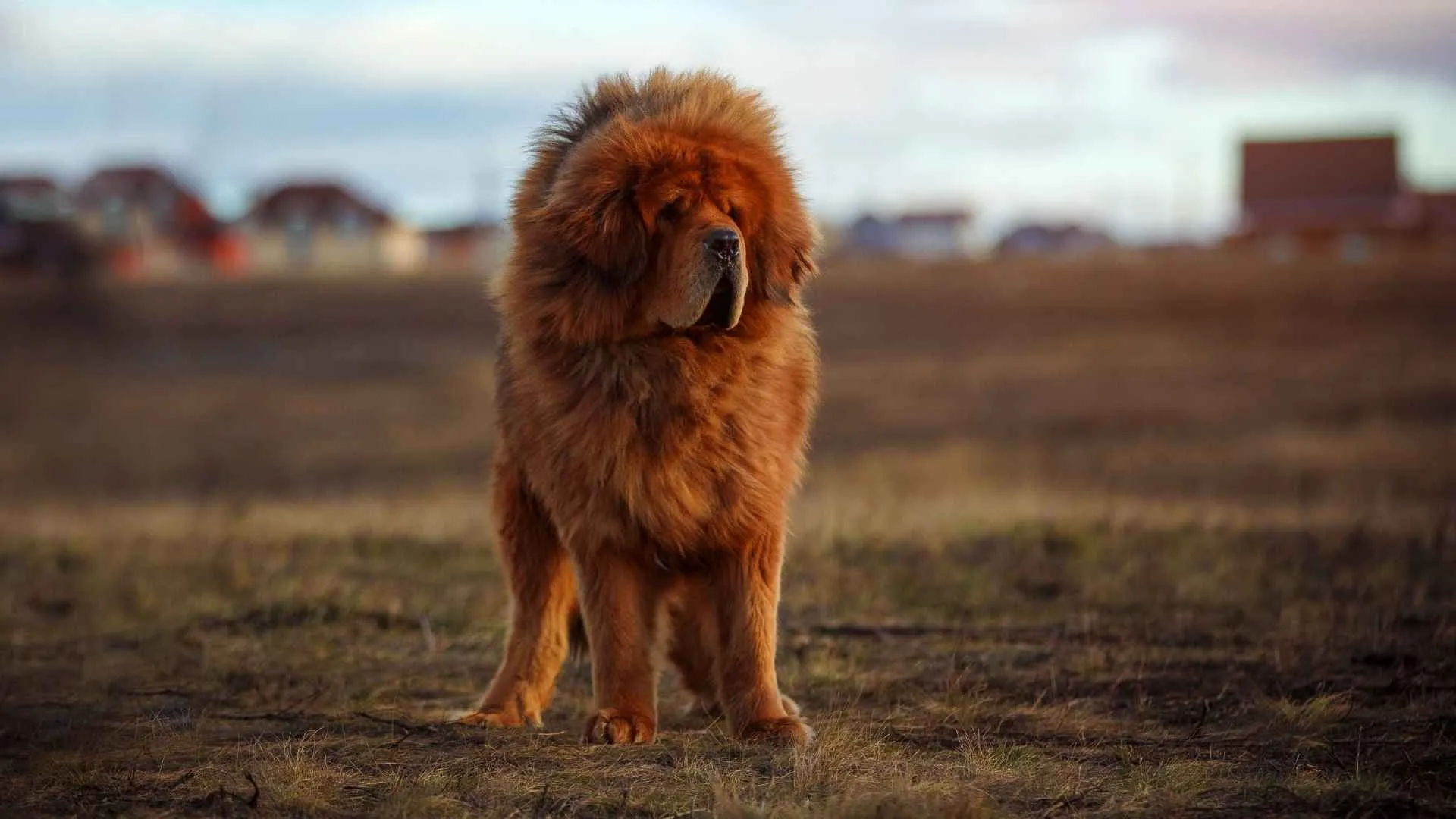
The Tibetan Mastiff was never bred to be a typical house pet — their roots go back to guarding livestock in the Himalayan region.
That ancient job shaped their temperament: independent, territorial, and deeply loyal to their inner circle. They won’t obey just because you ask — they evaluate situations on their own, which can be frustrating for new pet parents.
A coat made for mountains, not apartments
Their thick double coat isn’t just for show — it’s designed for brutal cold. During shedding season, it demands serious grooming, especially around the mane and tail, as per PDSA. That same coat also means they’re not suited for warm, humid climates without access to cool indoor spaces.
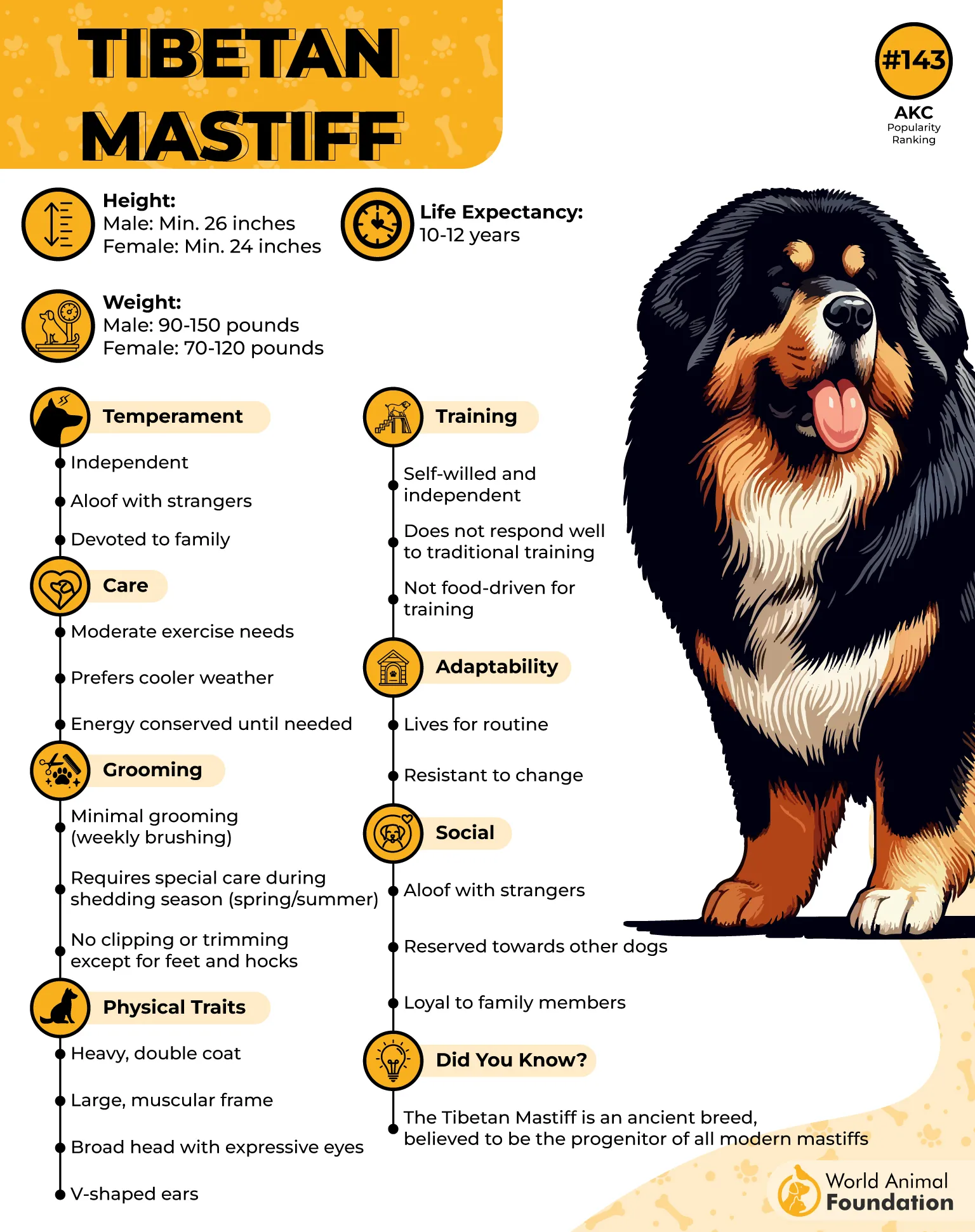
Space and structure required
This large breed needs more than a backyard — it needs boundaries. Tibetan Mastiffs can be aloof with strangers and highly territorial. Fences should be tall and secure, not just to keep them in, but to discourage any displays of dominance or patrolling behavior outside their home base.
Not built for speed, but for staying power
They mature slowly, both physically and mentally, and that patience pays off. With proper care and structure, their life expectancy can range between 10 to 12 years, which is notable for a breed of their size and bone density.
3. Leonberger
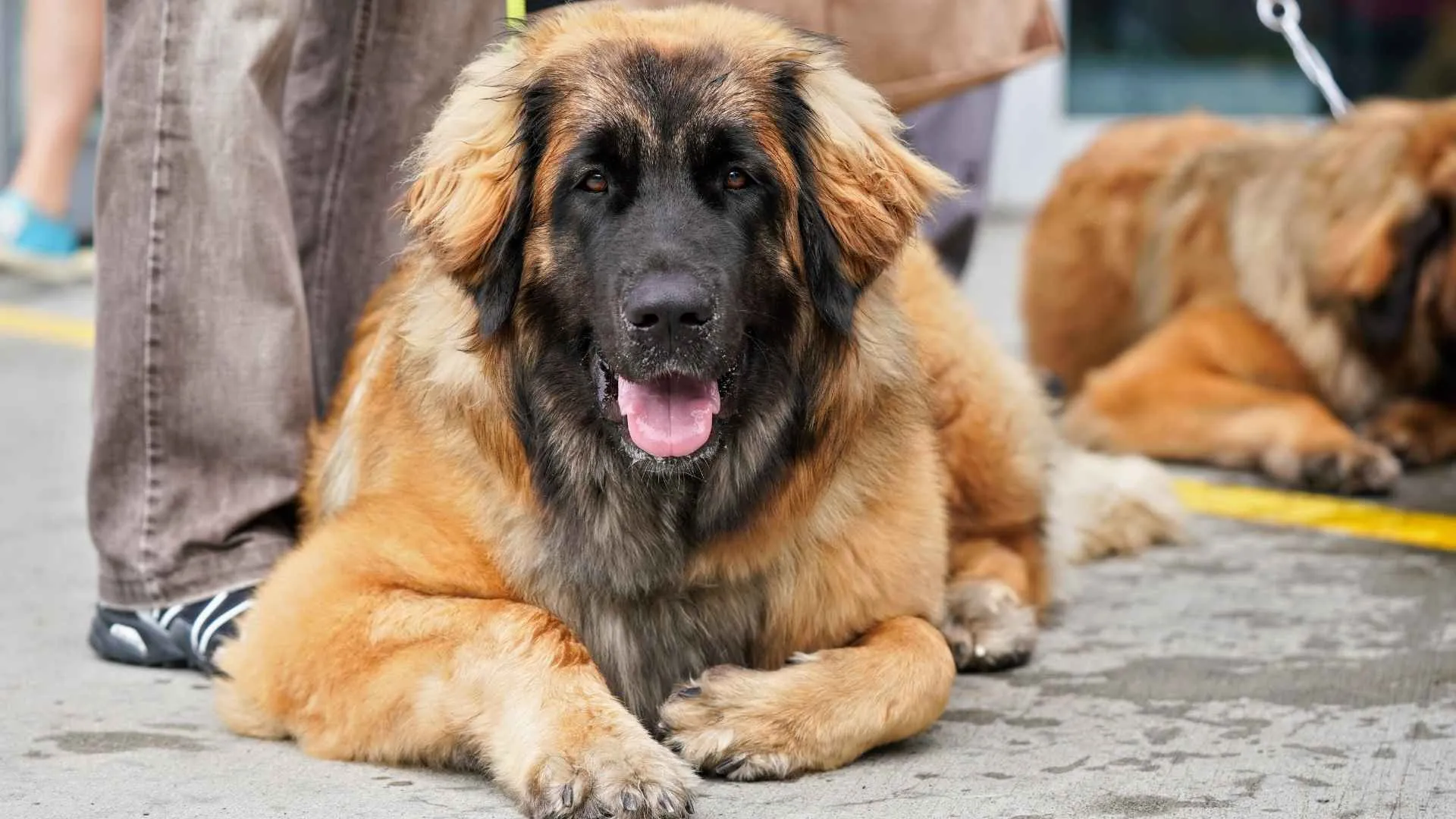
The Leonberger is one of the big dogs you’ll ever meet — both in size and personality. This breed was originally bred as a working dog in Europe, known for its impressive strength and stamina.
However, their imposing frame masks an inherently sweet nature. Despite their size, they’re great companions who thrive in calm, structured environments.
A family-focused companion
Leonbergers are remarkable with young kids, always gentle and patient. Their calm demeanor and natural instincts make them excellent playmates and protectors, though they should always be supervised with smaller children due to their sheer size. As family members, they tend to form strong bonds, becoming an integral part of daily life.
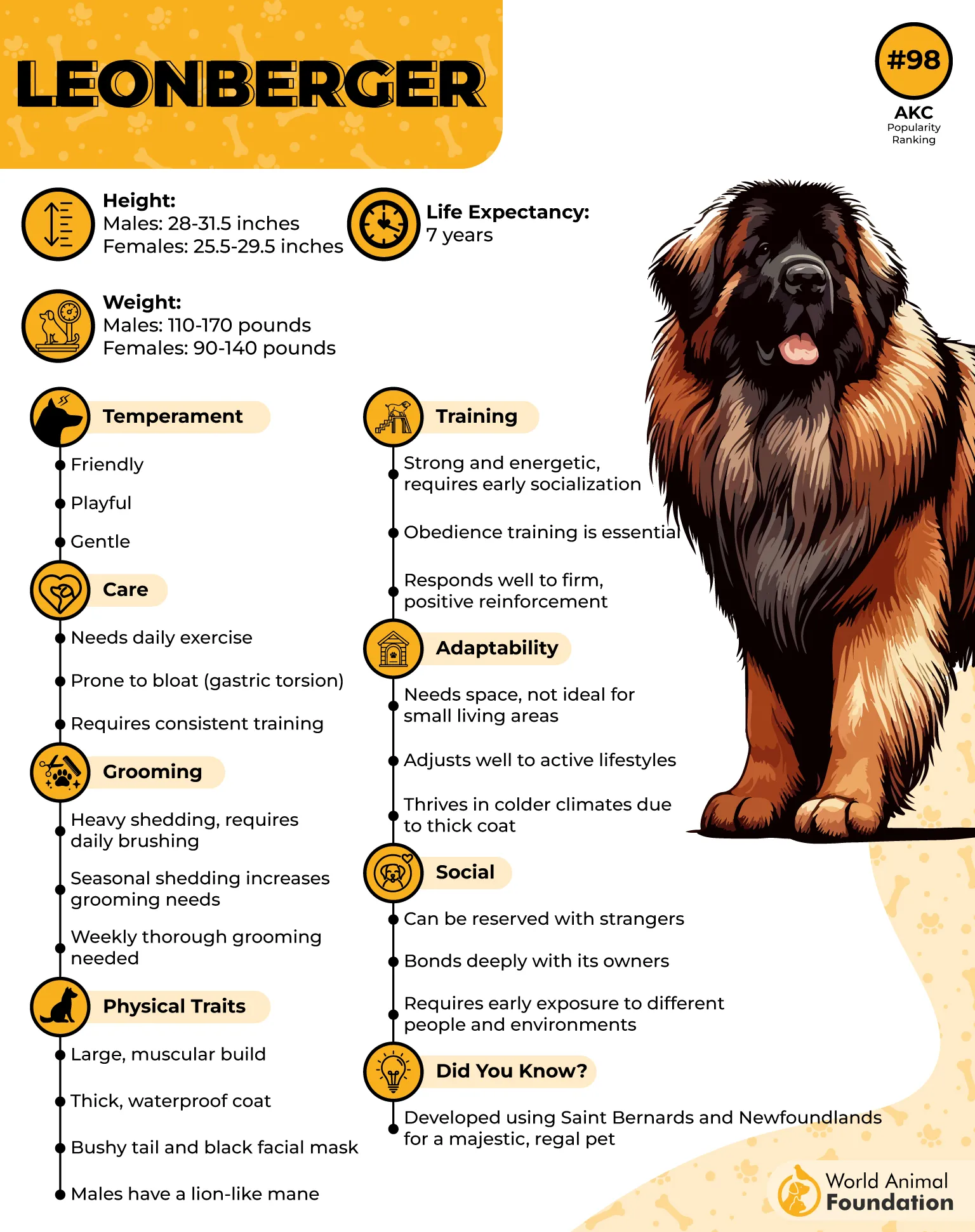
Social but selective
They get along well with other dogs, especially if introduced early. Despite their generally friendly nature, they can be a bit reserved around strangers, particularly in unfamiliar settings. Their protective instinct makes them excellent guardians, but they won’t initiate unnecessary conflict.
Not for the faint of heart
Given their size, Leonbergers are best suited for homes with plenty of space. While they don’t need as much exercise as some active breeds, they do enjoy daily walks and social interaction, making them a good fit for homes that can provide that balance.
4. Neapolitan Mastiff

The Neapolitan Mastiff stands out for its massive build, loose skin, and deep-set eyes that give it a permanent scowl. But behind that intimidating look is a dog that’s deeply attached to its family.
As a big breed, it can easily knock things—or people—over, so structure and training early on are critical, especially in homes with narrow spaces.
Not your average cuddler
Unlike other breeds that crave constant attention, Neos prefer quiet companionship. They’ll follow you from room to room like a shadow but won’t beg for affection.
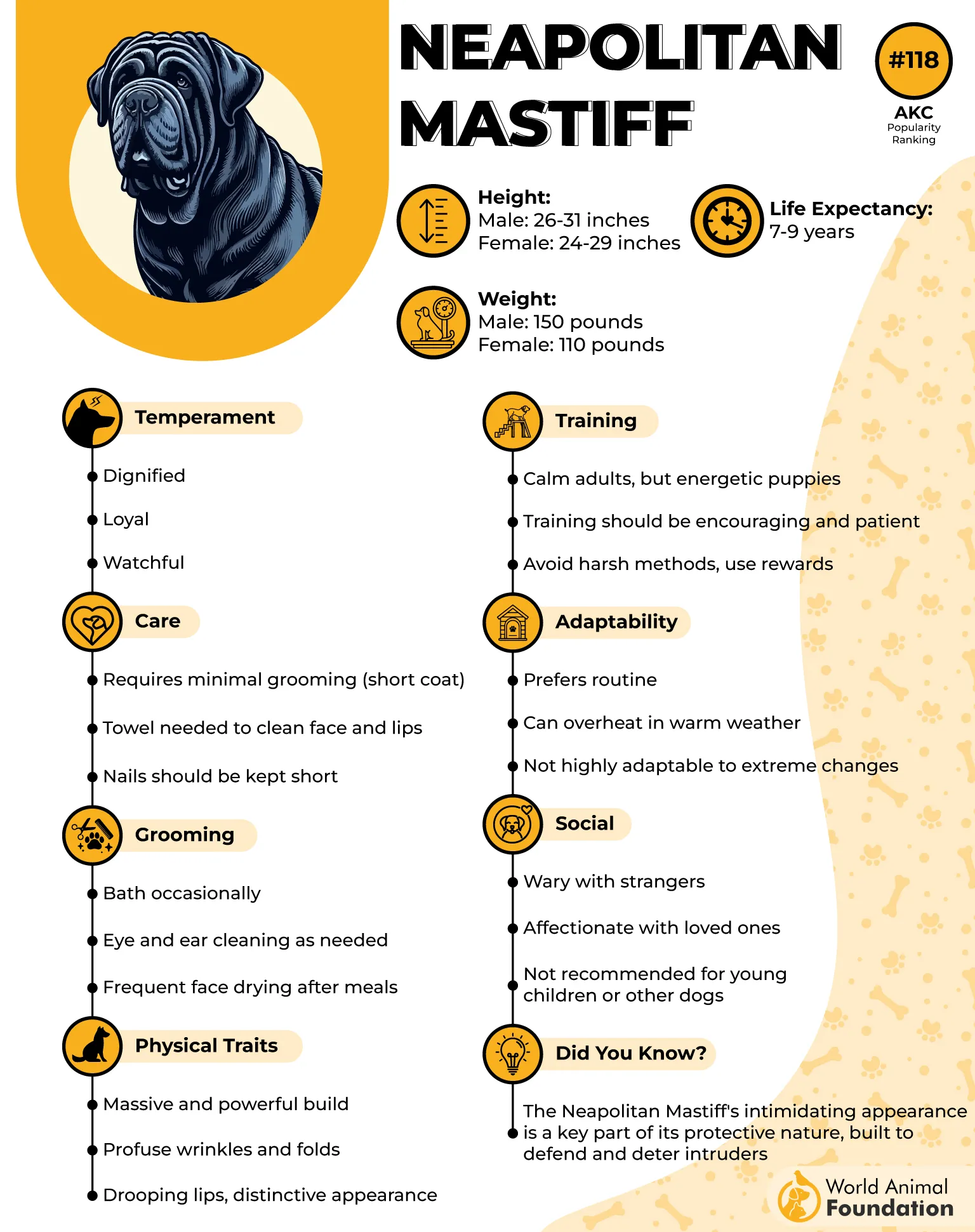
Their loyalty runs deep, and they have a natural guarding instinct that kicks in without the need for provocation. This makes them excellent deterrents, without the excessive barking.
Low-energy but not low-maintenance
They don’t demand high-energy games, but daily exercise is still non-negotiable, as per the experts of PetMD. A controlled walk or a short play session in a secure yard keeps their joints healthy and their minds engaged.
Skipping this routine can lead to weight issues or restlessness, especially in younger dogs going through growth spurts.
Drool comes with the territory
Expect heavy drooling, especially after meals or drinks. Their facial folds require regular cleaning to prevent infections, making grooming less optional and more of a health routine.
5. Anatolian Shepherd
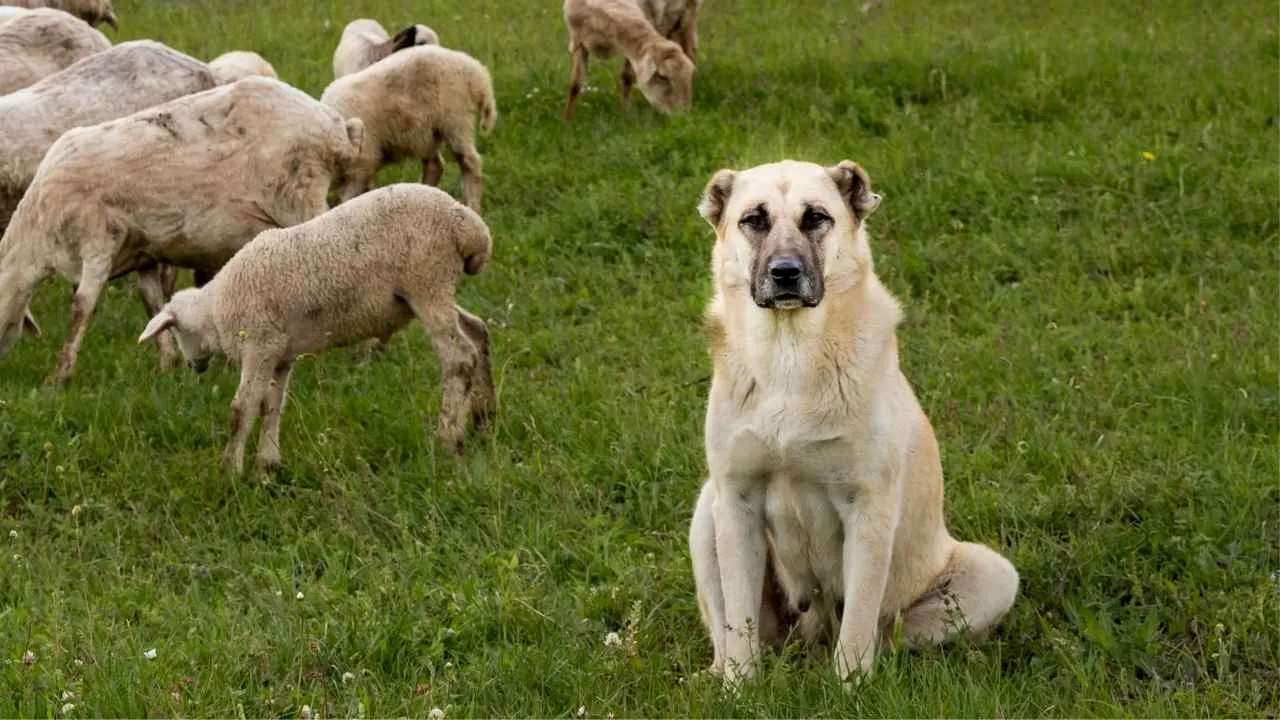
The Anatolian Shepherd wasn’t bred for obedience — it was developed to think and act on its own. Originating in Turkey, it has centuries of experience watching over flocks without human direction.
That instinct is still strong today, making them ideal for rural homes or properties where independent decision-making is a benefit, not a concern.
A born guardian, not a socialite
Don’t expect over-the-top greetings. While not traditionally affectionate with strangers, this breed can develop deep bonds with its core humans. They’re calm indoors, but always watching.
Their urge to protect is hardwired, which means early socialization is crucial, not to make them friendlier, but to help them assess real threats from background noise.
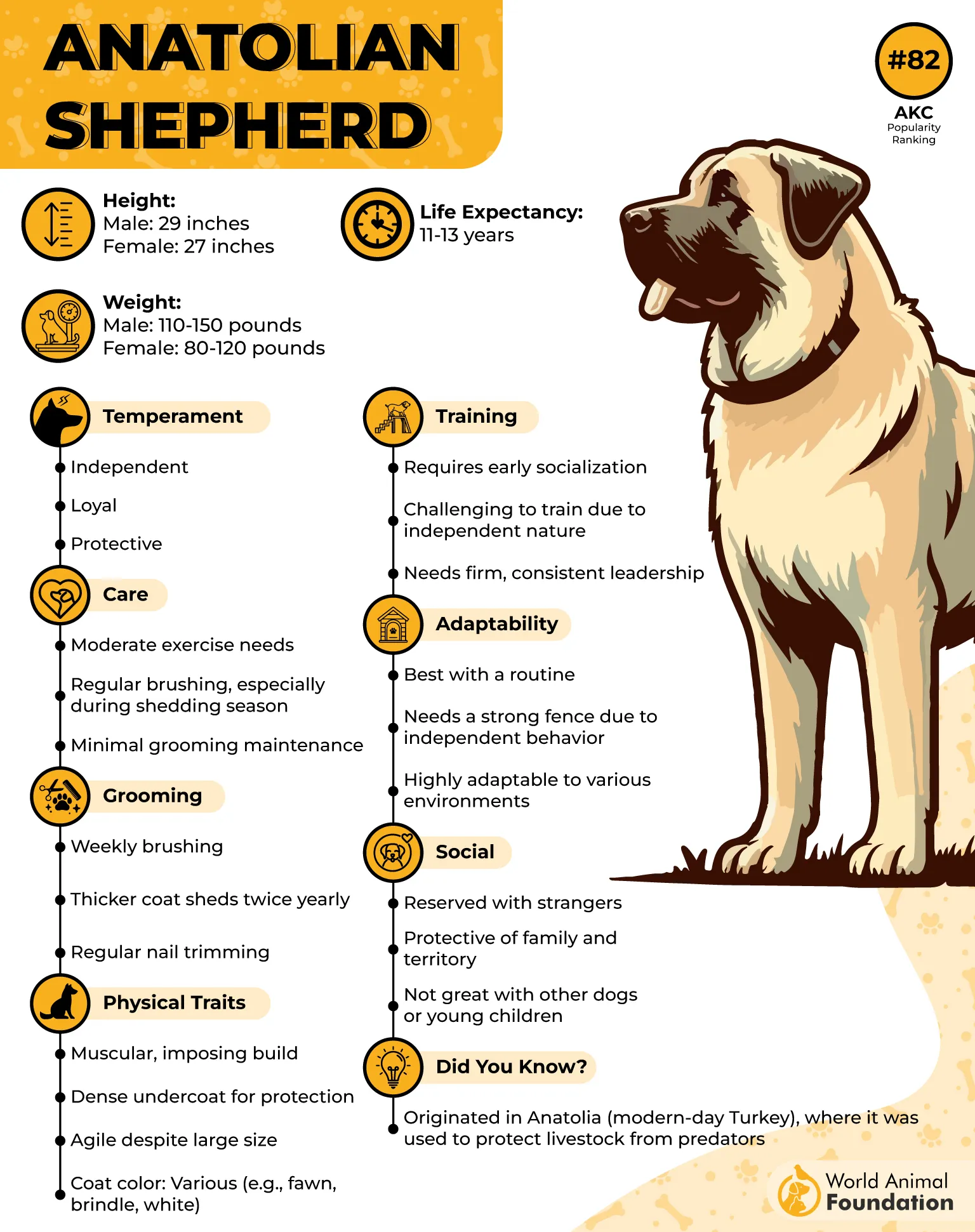
They work, not play
Although classified under herding, they don’t drive animals—they guard them. They rely on patience, presence, and sharp awareness rather than speed or agility. These traits can confuse first-time owners expecting a high-energy herder.
Structure over entertainment
Mental stimulation is more important than toys or games. They don’t need constant activity, but they do need a purpose. Without one, they’ll invent their own rules—and enforce them with quiet authority. Fences and boundaries aren’t suggestions; they’re mandatory.
6. Saint Bernard

The Saint Bernard’s legacy wasn’t built in backyards—it was forged in the snowy passes of the Swiss Alps. These dogs were trained for rescue, locating stranded travelers and keeping them warm until help arrived.
That’s not folklore; historical records credit them with saving over 2,000 lives, many without direct human guidance, as highlighted by WebMD.
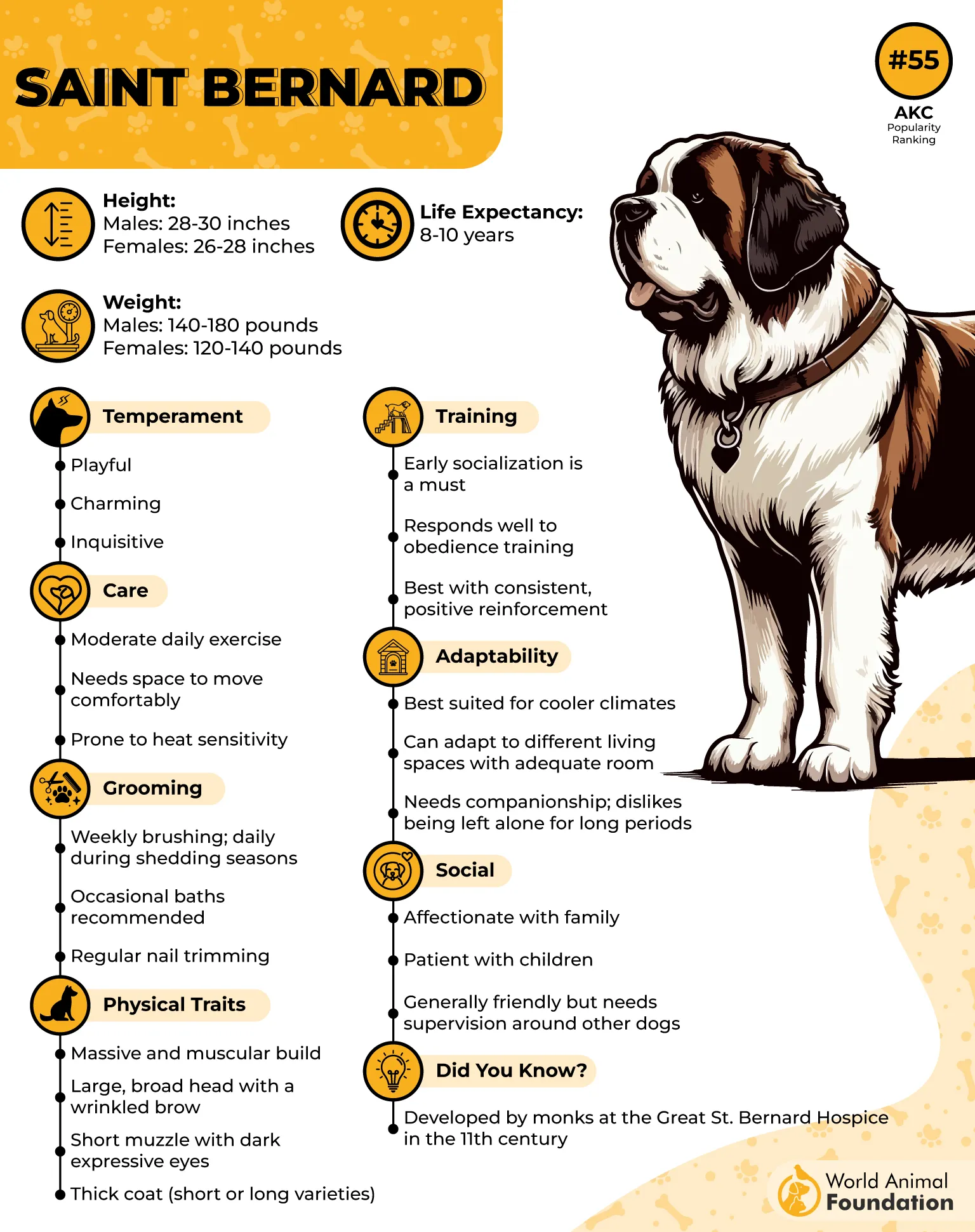
Big paws, soft touch
Despite their size, they move with surprising grace indoors. Known as the ultimate gentle giant, they’re patient with children and tolerant of noise, but not overly excitable.
They’ll often lie close, just observing, and lean in silently for comfort when they sense something’s off. It’s less about playtime and more about presence.
Instinct without drama
The Saint Bernard doesn’t react on impulse. Their responses are deliberate—whether it’s standing between you and a perceived threat or quietly walking a new guest around the room. This calm, courageous temperament was vital in avalanche zones where panic could cost lives.
More emotional than you’d expect
There’s a surprising emotional connection with this breed. They’re intuitive and easily affected by household tension.
Even their expression shifts—droopy eyes and furrowed brows deepening when moods change. It’s not dramatics—it’s genuine sensitivity hardwired into their working history.
7. Tosa Inu
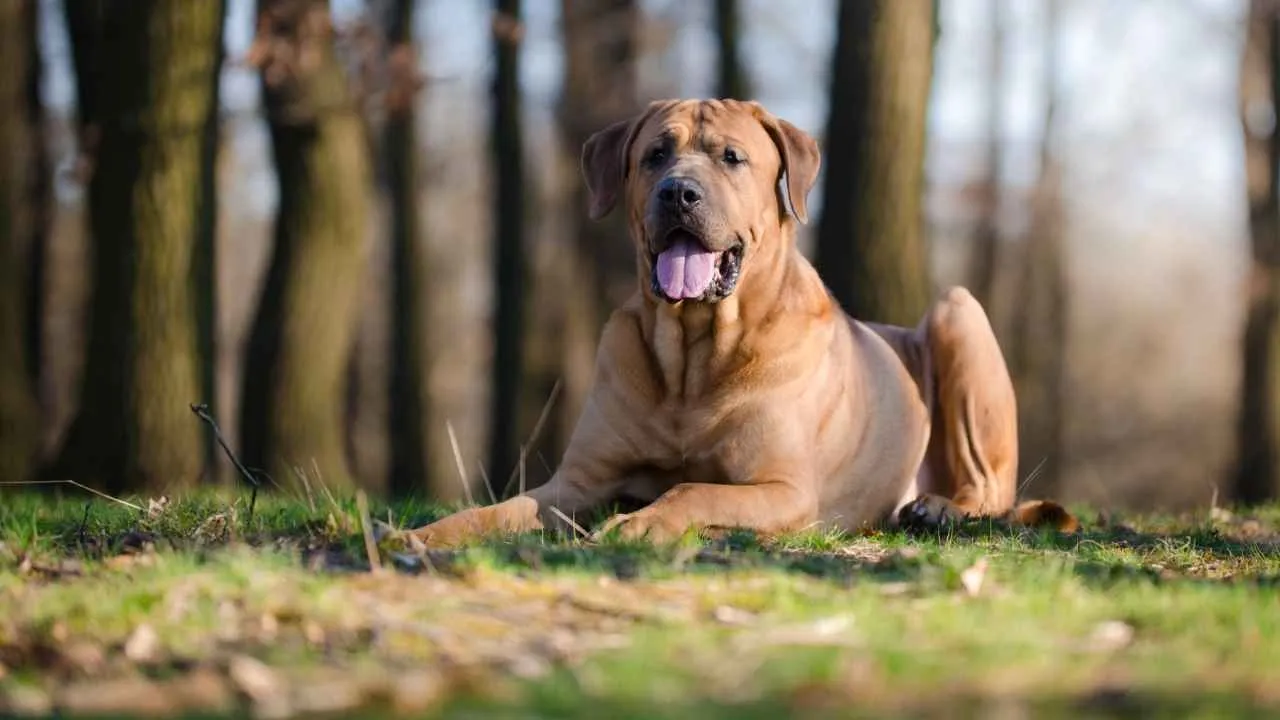
The Tosa Inu was developed in 19th-century Japan not for popularity, but for purpose—silent dog fighting, where barking was considered a flaw.
This trait remains today. They’re observant, rarely vocal, and don’t waste movement. Everything about their body language is intentional, from their still posture to the way they hold a gaze.
Imposing, but not reckless
Physically, they’re large and muscular, but what defines them is composure. They don’t lunge at triggers—they evaluate. A well-trained Tosa isn’t reactive; it’s calculating. This control comes from generations of selective breeding for calm intensity, where self-restraint was as valuable as strength.
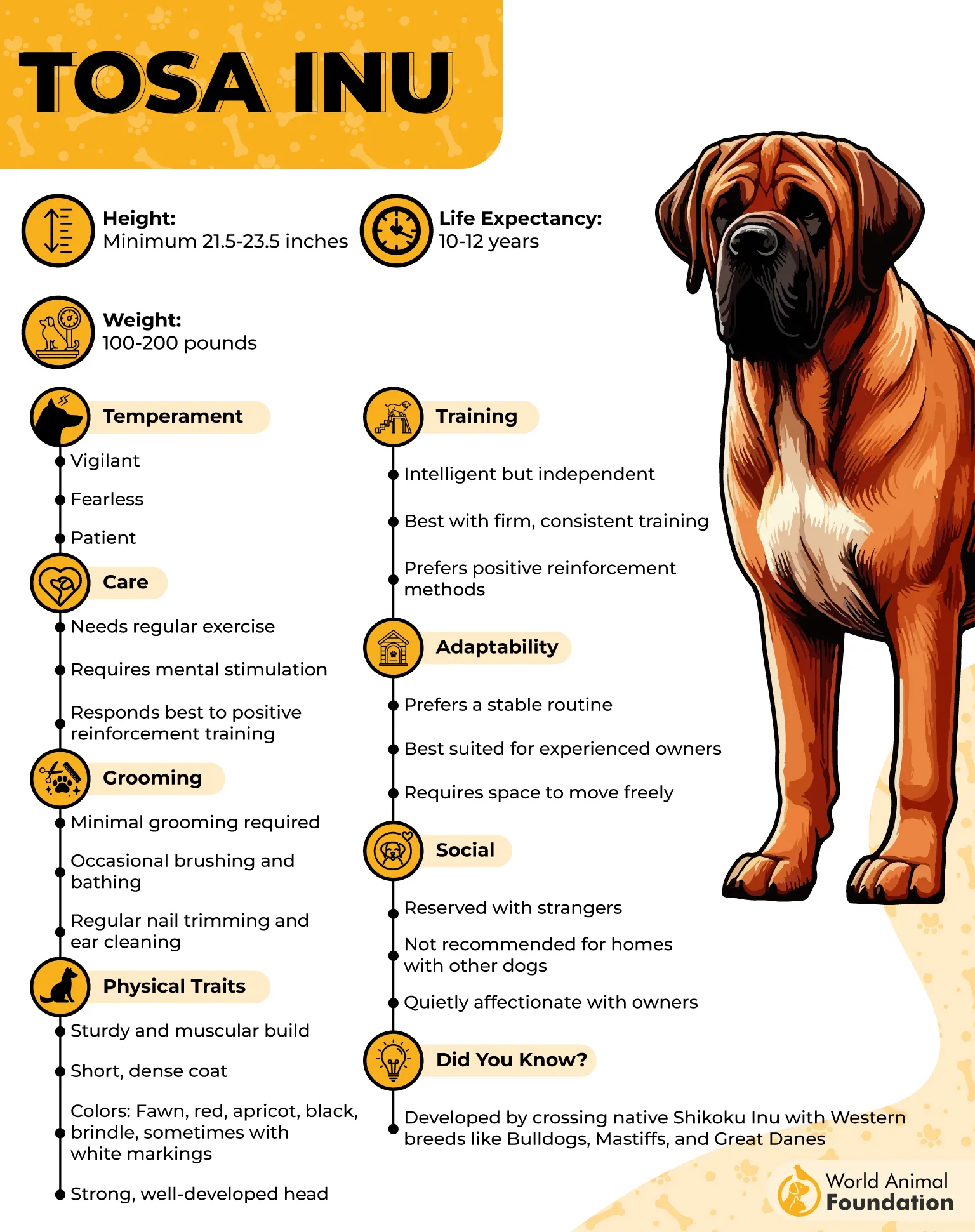
Respect over routine
Unlike many breeds, the Tosa Inu doesn’t thrive on repetition. They respond best to firm but respectful leadership, not dominance, but mutual understanding.
They don’t seek affection constantly, yet they’re incredibly loyal to the person they recognize as their leader. Obedience isn’t automatic—it’s earned.
Not a breed for guesswork
They require experienced handling. Socialization and environmental awareness must be strategic, not casual. Because of their origin and presence, some countries have placed restrictions on ownership. But in the right hands, their balance of mental steadiness and physical power is unmatched.
Conclusion
Living in a big house means more than just having space—it’s about how you fill it. And with the right pup by your side, that space becomes a home.
From calm giants to quiet guardians, large dog breeds bring loyalty, strength, and a surprising softness. Each of the dogs on this list isn’t just made for wide hallways and open yards—they’re made for companionship.
If you’re considering a rescue dog, many of these gentle giants are waiting for second chances in shelters. They remember love, and they repay it tenfold.
In the end, the size of your home doesn’t matter as much as the life you create inside it. With a dog that matches your rhythm, you’re not just getting a pet—you’re gaining a partner.


